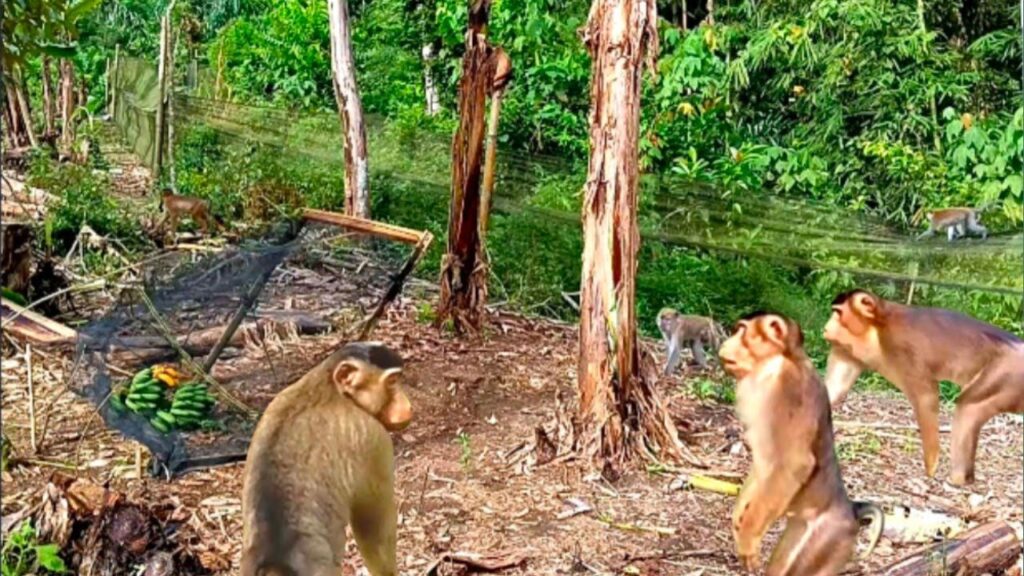
To fight back, the farmers began designing new traps: iron cages, covered pits, and even pulley systems that dropped nets from the trees. But every time, the monkeys seemed to adapt faster. One trap was sprung accidentally by a falling branch, and after that, the monkeys never touched that area again. It was as if they had learned from watching what happened.
There was even a story that went viral in the nearby towns — a farmer had set up a clever trap using a fake fruit tied to a rope. The next morning, instead of catching the monkey, he found a real fruit placed inside the trap, as if the monkey had traded it just to mock him. “These monkeys are joking with us now!” he said, half angry, half amazed.
Soon, the situation became more than just a nuisance — it was turning into a psychological game. The monkeys seemed to anticipate human behavior. Whenever farmers left the area, they attacked in groups. But if people were watching, they stayed hidden in the canopy, studying. Even the dogs, once fierce defenders of the fields, began to hesitate. The monkeys would throw sticks from the trees or make loud screeching noises to scare them away.
What baffled everyone most was how organized the troops were. There was always a leader — a large, scar-faced male who never came down but watched from the top branches, signaling the others. The smaller monkeys carried out the raids while he supervised, and when the humans shouted or clapped to scare them, the leader would bark commands that made the group retreat instantly.
The villagers, realizing brute force wasn’t working, began to rethink their strategy. Instead of trying to trap the monkeys, some started using decoys and distractions — fake fruit piles, noise-making devices, even mirrors to confuse the clever primates. One young farmer named Ishan had a brilliant idea: he played recorded monkey calls from a speaker to lure them into one area, while his friends quietly collected the fruits from another. It actually worked — for a few days. Then the monkeys stopped responding.
It became clear — these animals weren’t just pests. They were learning, adapting, and strategizing like humans. Some villagers even began to respect them, calling them “the forest thinkers.” Others, however, grew frustrated, saying the monkeys were becoming a threat to their livelihoods.
By the end of the season, many traps remained empty, rusting in the fields. The monkeys had won this round — not through strength, but through intelligence. Watching them leap from tree to tree at sunset, their chatter echoing through the jungle, Uncle Rahim sighed and said, “They learn from us faster than we learn from them.”
And perhaps that’s the truth about coexistence — in the never-ending contest between man and nature, it’s not always about who’s stronger, but who’s smarter.


